Only about a week to go until our Issue 29 Launch Party!
Join us on April 29 from 12:00 PM to 1:00 PM Arizona Time to hear a talk by our contributor William J. Cobb. We’re so excited and we look forward to seeing you there!
To register click here.
The Online Literary Magazine at Arizona State University
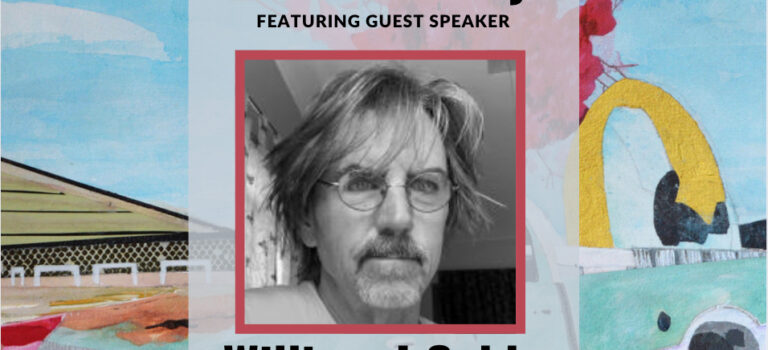
Only about a week to go until our Issue 29 Launch Party!
Join us on April 29 from 12:00 PM to 1:00 PM Arizona Time to hear a talk by our contributor William J. Cobb. We’re so excited and we look forward to seeing you there!
To register click here.
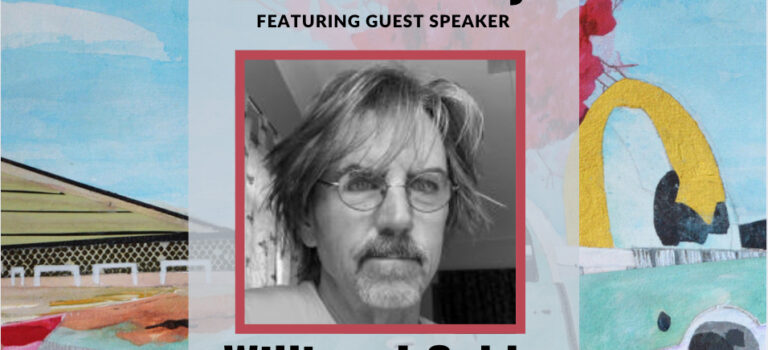
The wait is almost over for our official virtual launch party for Issue 29!
Join us on April 29 from 12:00 PM to 1:00 PM Arizona Time to hear a talk by our contributor William J. Cobb. We can’t wait to see you there!
Don’t forget to register here.
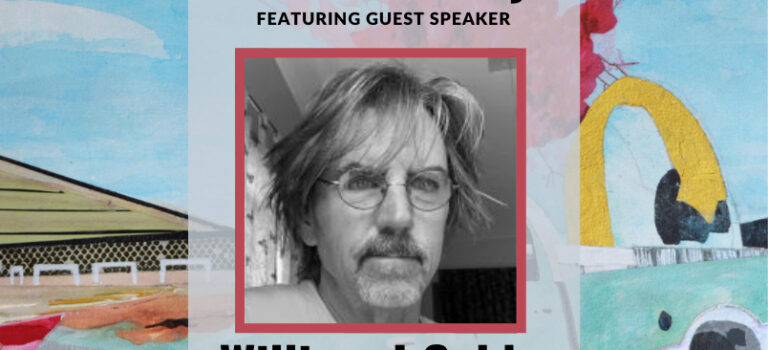
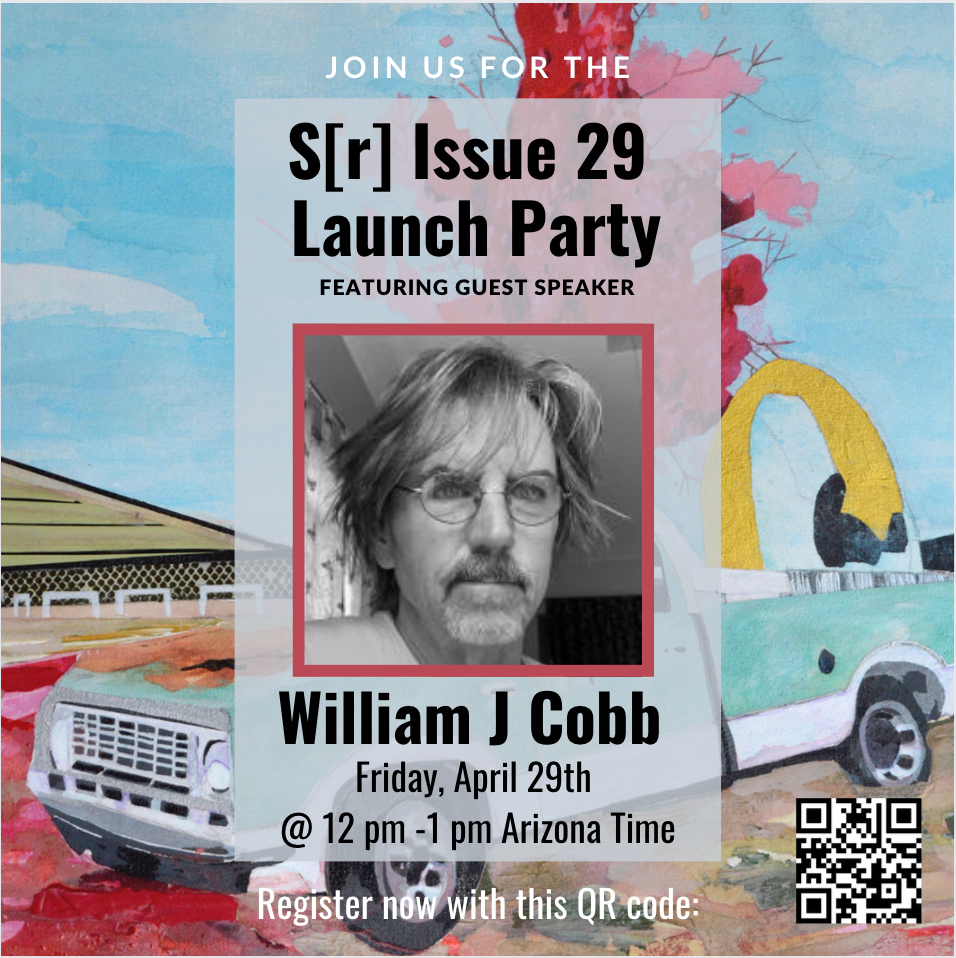
We are excited to announce the date of our official virtual launch party for Issue 29.
Join us on April 29 from 12:00 PM to 1:00 PM Arizona Time to hear a talk by our contributor William J. Cobb. We look forward to seeing you there!
To register click here.
 Today we are pleased to feature author William J. Cobb as our Authors Talk series contributor. William talks about his essay “The Altered States of Stuffed Animals” which was inspired by his daughter’s collection of stuffed animals. He goes on to say that he has a complicated relationship with stuffed animals one that is, “usually dismissive, [and] begrudgingly sentimental.”
Today we are pleased to feature author William J. Cobb as our Authors Talk series contributor. William talks about his essay “The Altered States of Stuffed Animals” which was inspired by his daughter’s collection of stuffed animals. He goes on to say that he has a complicated relationship with stuffed animals one that is, “usually dismissive, [and] begrudgingly sentimental.”
You can read William’s piece, “The Altered States of Stuffed Animals,” in Issue 17 of Superstition Review.
 Anna Karenina Is a Junkie, and She’s Weeping.
Anna Karenina Is a Junkie, and She’s Weeping.Years ago John Gardner’s The Art of Fiction (1984) was a mainstay in creative writing classrooms, and was one of the first “writer’s craft” books I read. I remember arguing (via that little voice in my head) with much of it, but nonetheless inculcating many of his principles into my own rolodex of techniques, including the idea of fiction as a continuous dream, the need (and expectation) that literary writers follow a tradition, and most problematically, Gardner’s stance that emotions should not be described directly—a somewhat-more-rigid (and specific) take on the old adage of “show, don’t tell.” Even talking (or thinking) about this book makes me feel as if my very memories, undulating in wavy lines, are being superimposed upon Gardner’s (simple, elegant) book jacket.
Ah, the Eighties. When Raymond Carver was all the rage, and Stephen King was trapping us in a car besieged by a rabid Saint Bernard. We lived in ratty apartments where the toilet would never stop running, and were headed for divorce, rehab, and bankruptcy, or all of the above. Carver was the dean of what now seems the musty school of Minimalism or Dirty Realism, both terms that he rejected. It’s hard not to mention Carver when dragging Gardner’s skeleton out of the closet, since Carver was famously a student of Gardner’s, which Carver wrote about with great admiration in his essay “Fires.”
I’ll confess to being in thrall with Carver’s (and King’s) stories, and of starting my writing career by imitating both shamelessly—though only, in my defense, for a brief time. I was too young and innocent (then, at least) for Carver’s fictional demographics, and really just loved the rhythm of his prose, the bleakness, that whole American downer scene. Working-class writers of the world, unite! He made drinking problems cool, and was a bit like a cleaned-up version of Charles Bukowski—whose Ham on Rye (1982) is a masterpiece of gritty lit. (Even Stephen King’s greatest hero, Jack Torrance, suffers an Achilles’ heel of alcoholism in The Shining.) Carver not only learned from and admired John Gardner, he exemplifies Gardner’s emotion-describing reserve. There are many feelings seething in Carver’s wrenching moments, such as in “Are These Actual Miles?” (from Will You Please Be Quiet, Please? published in 1976), when a first-person narrator describes teetering on bankruptcy, letting his wife go out to sell a used car, an errand from which she returns with hints that she bedded the used car dealer dude to get a good price, or in “So Much Water So Close to Home,” when weekend fishermen discover a drowned girl in the water, and just go on fishing and drinking. But Carver doesn’t directly announce those emotions; he doesn’t tell us.
Tolstoy, on the other hand, not only tells us the emotions his characters are feeling, he goes to great lengths to do so, and describes them with play-by-play fervency, as if trying to be the Pat Summerall of calling the National Emotion League: “What are you thinking? What do you think of me? Don’t despise me. I’m not worthy of being despised. I’m just unhappy. If anyone is unhappy, I am,’ she said and, turning away, she wept.” (On another things-change-and-stay-the-same note, in Anna Karenina Tolstoy also complains about how the nobility drinks too much: “We go around saying that the people drink; I don’t know who drinks more, the people or our own class.”)
As for describing emotions directly or suggesting them, who is right and who is wrong? Hard to say. As far as wrong is concerned, neither is the easy answer, but they definitely produce different effects. For instance, Carver is famous for his understated alcoholic stories, such as “Where I’m Calling From,” in which a booze-hound’s girlfriend liberates him from rehab, and they end the story drinking champagne and eating fried chicken, with all the guilt, remorse, and shame implied, not specified. Tolstoy also wrote of addiction: In Anna Karenina (1878), after Anna leaves her chilly husband, Alexei Alexandrovich, for the dashing Vronsky, she becomes isolated and outcast, shunned by high-society, castigated by strangers at an opera, and takes morphine to ease the pain. (She’s also a writer, by the way: In a late chapter Tolstoy reveals that Anna is writing a children’s book, which sounds like a YA title, and an editor is exhorting her to finish it.) While discussing the possibility of divorce with her sister-in-law, Dolly, Anna says, “There isn’t a day or an hour that I don’t think of it and don’t reproach myself for that thinking … because the thought of it could drive me mad. Drive me mad,’ she repeated. ‘When I think of it, I can’t fall asleep without morphine.” Not long after that scene, Tolstoy describes Anna getting high to calm herself: “Anna meanwhile, on returning to her boudoir, took a glass and into it put a few drops of medicine, of which morphine made up a significant part, and after drinking it and sitting motionless for a time, grown quiet, she went to the bedroom in calm and cheerful spirits.”
The complex array of her feelings is delineated in great detail, and Tolstoy rightly gets credit for being one of the earliest practitioners of the “stream-of-consciousness” technique, when he describes her thoughts, feelings, and vision of the world shown through her inner dialogue, most famously in the passage leading up to her suicide, and in earlier moments, such as when she meets Vronsky on the snowy train station. Carver generally avoids descriptions of what the characters are thinking or feeling, and instead relies on situations from which the reader must parse out the feelings—a technique akin to T.S. Eliot’s famous “objective correlative.”
Carver was writing exactly one century after Tolstoy, though the trend toward closed-mouth portrayal of emotion began much earlier. Blame Ernest Hemingway, if you must, master of understatement and sangfroid. At times it’s portrayed as a male American-writer trait, but Flannery O’Connor rarely describes her characters’ emotions directly, and there are many other examples of female American writers as well. One of the finest practitioners of emotional don’t-tell is the great Cormac McCarthy, who effects a tremendous emotional tug in his novel Suttree when the alcoholic Suttree visits his ex-wife to attend the funeral of his son, and she physically attacks him for showing up. Tolstoy’s direct descriptions of emotions make sense in light of his seminal essay “What Is Art?” There he offers one definition of art as being simply “a communication of emotion.” But in that long (and long-winded) essay, he essentially expands or adapts the “show, don’t tell” cliché to the more expansive “show and tell,” emphasizing it’s the artists (especially those writing narrative fiction) task to recreate the experience provoking the emotion, and not simply to tell the reader that the character experienced it.
At this point you might ask: Why should writers care about this in the 21st century? Rereading Anna Karenina recently, I was struck at how easy-going and straightforward much of the story is. Tolstoy is, if anything, un-coy. His fiction seems more expansive than Carver’s. As much as I admire Raymond Carver, I rarely return to reading his work for fun—I know, a loaded term. Tolstoy produces a greater literary joy, perhaps in part due to his expansive, multifaceted approach. I suspect he would consider a reluctance to describe a character’s happiness, remorse, or anguish as being too reserved, a literary stylistic trait similar to the emotional frigidity of Anna Karenina’s husband Alexei. It’s never completely clear in the novel, but one suspects Anna had been taking those drops of morphine well before she met Vronsky, and her husband’s coldness plus her addiction may be the reason she ended up in another’s man’s arms. That might work for readers as well: If you’re too reluctant (or dogmatic) to describe your characters’ emotions directly, you might find your readers being seduced by a more laid-back, dashing approach, such as Gillian Flynn’s Gone Girl (2012), which is not the most literary novel in the last few years, yet is certainly grisly fun. But the book I’m most looking forward to reading is Cormac McCarthy’s The Passenger (now rumored to appear in December 2017 or 2018), and he combines the best of Hemingway’s emotional understatement with Tolstoy’s expansive view of the world.—William J. Cobb
Excerpt From: Leo Tolstoy, translated by Richard Pevear & Larissa Volokhonsky. Anna Karenina, p. 1264, 1266, 1381.
So I’m currently on a mini-book tour of Texas, although I don’t know if “mini” ever applies to much in Texas, since this wee ramble over the interstate prairie includes 3,000-plus miles of driving in 12 days. That’s a lot of hours of sitting behind the steering wheel, staring at the road, driving on mental autopilot, working on my next novel—in my head. As a young writer, just starting out, I used to write every day religiously, believing that constant work is the key to success, which it is. But now I value more the thinking-time: If I know what I want to say, I can usually find the time to sit down and say it. The “constant work” is complex, and involves more than writing that next scene of, say, a 35-year-old woman holding a teenage boy hostage, whom she caught tom-peeping her, and whom she shot. But now she has to dress his wounds, feed and care for him, and decide how to return him to his father, who scares her, who she thinks is abusing the boy. To add to that complexity, I’m currently promoting my novel The Bird Saviors, just out this summer, and have a deadline of November 1 for the final draft of a new book of short stories, which already has a publisher. All that is fine and dandy, but what I really want to do is write the new one, tentatively titled The Lost Person. (That may change. The title, I mean. I tend to come up with a dozen/20 titles before throwing up my hands in despair and choosing Contestant Number One, or whatever sounds good that day. My first title was The Donkey Woman. Then I thought: Hmmm. That may give the wrong impression. And the first words you see on a book shouldn’t give a wrong impression, right?)
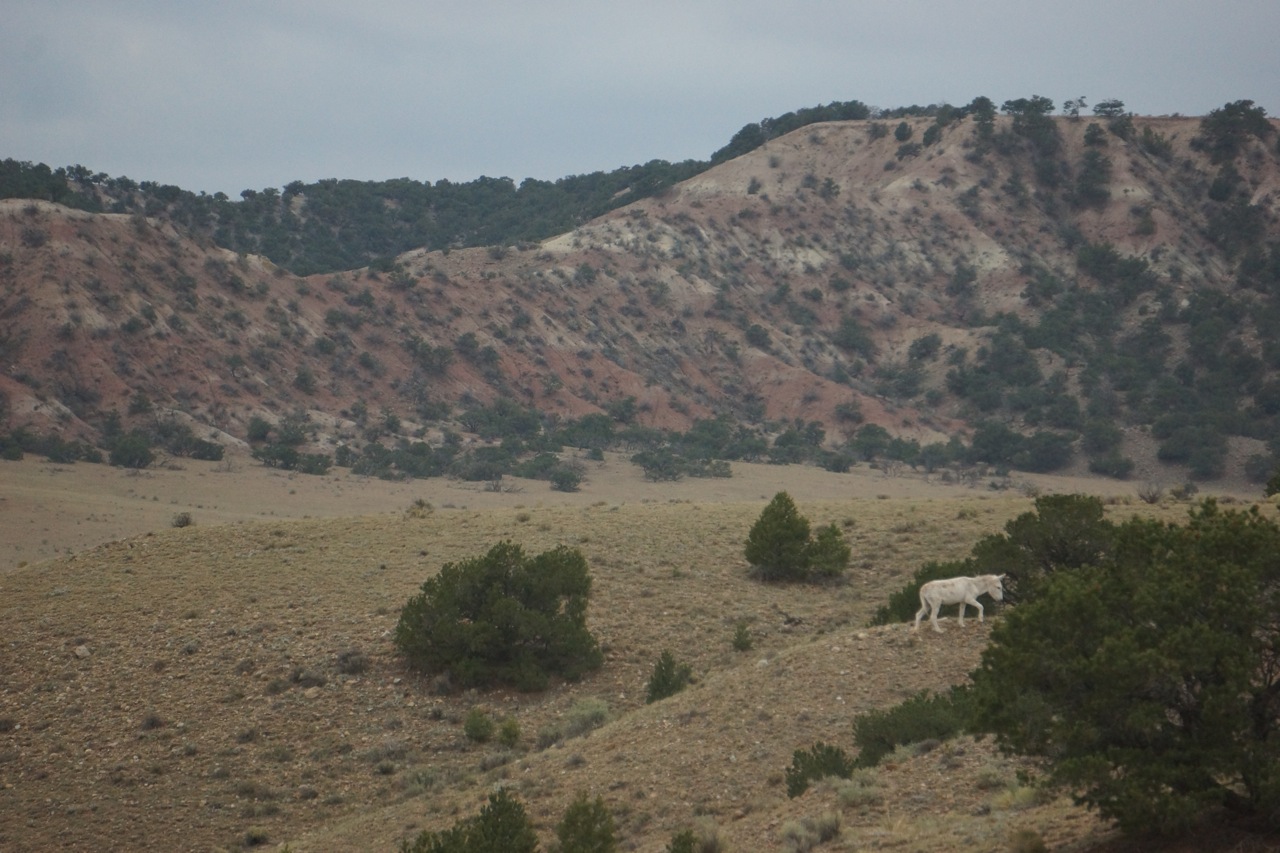 When I don’t have the time to sit down and write, it seems I’m often driving. I drive and think, What should happen next? This woman is nicknamed The Tooth Fairy by the boy, because she looks like what he imagines the Tooth Fairy would, if the TF were real. She works at a bar/restaurant, and she hates drinkers and eaters. She constantly sees the big bellies and pink faces of Good Time Charlies, and she’s developed a decidedly sour view of mankind. Should the boy’s father be one of her customers? (Probably.) Should he make a pass at her? (Hmmm. Probably not. But maybe.) What about the boy’s mother? What happens if the father thinks someone else has abducted his son, and is certain he knows the identity of his abductor, but he’s wrong? What would he do? (I suspect this part will end very, very badly.)
When I don’t have the time to sit down and write, it seems I’m often driving. I drive and think, What should happen next? This woman is nicknamed The Tooth Fairy by the boy, because she looks like what he imagines the Tooth Fairy would, if the TF were real. She works at a bar/restaurant, and she hates drinkers and eaters. She constantly sees the big bellies and pink faces of Good Time Charlies, and she’s developed a decidedly sour view of mankind. Should the boy’s father be one of her customers? (Probably.) Should he make a pass at her? (Hmmm. Probably not. But maybe.) What about the boy’s mother? What happens if the father thinks someone else has abducted his son, and is certain he knows the identity of his abductor, but he’s wrong? What would he do? (I suspect this part will end very, very badly.)
What I see on the road often ends up in my fiction: In an early scene of The Bird Saviors, an ornithologist picks up a dead hawk’s body on the roadside (did that). On a recent trip I snapped this photo of what appears to be a unicorn, but what I guess to be a rather unusual white donkey. I’m betting that beast makes a cameo appearance in The Lost Person, or whatever it ends up being called—The Donkey Princess, maybe. Because wherever there’s a unicorn, a princess has to be waiting in the wings.
 William J. Cobb is a novelist, essayist, and short fiction writer whose work has been published in The New Yorker, The Mississippi Review, The Antioch Review, and many others. He’s the author of the novels—The Fire Eaters (W.W. Norton 1994) and Goodnight, Texas (Unbridled Books 2006)—and a book of stories, The White Tattoo (Ohio State UP 2002). He has reviewed books for the Dallas Morning News, the Houston Chronicle, and the New York Times, and lives in Pennsylvania and Colorado.
William J. Cobb is a novelist, essayist, and short fiction writer whose work has been published in The New Yorker, The Mississippi Review, The Antioch Review, and many others. He’s the author of the novels—The Fire Eaters (W.W. Norton 1994) and Goodnight, Texas (Unbridled Books 2006)—and a book of stories, The White Tattoo (Ohio State UP 2002). He has reviewed books for the Dallas Morning News, the Houston Chronicle, and the New York Times, and lives in Pennsylvania and Colorado.
We are pleased to announce that his novel, The Bird Saviors, was published this summer. His book of stories, What Happens to Rain, will be published next year.
You can read more of Cobb’s fiction in Issue 8 of Superstition Review.
 We are happy to announce the launch of Issue 8 of Superstition Review. Following are some of the artists and writers featured:
We are happy to announce the launch of Issue 8 of Superstition Review. Following are some of the artists and writers featured:
Art: Michael Velliquette is a mixed media artist who makes dimensionally complex paper sculptures and drawings. Museum exhibitions include Slash: Paper Under the Knife at the Museum of Art and Design (New York) and Psychedelic at the San Antonio Museum of Art. A monograph titled Michael Velliquette: Lairs of the Unconscious is currently available on Amazon.com through Devibook Publishers.
 Fiction: William J. Cobb is a novelist, essayist, and short fiction writer whose work has been published in The New Yorker, The Mississippi Review, The Antioch Review, and many others. He’s the author of the novels—The Fire Eaters (W.W. Norton 1994) and Goodnight, Texas (Unbridled Books 2006)—and a book of stories, The White Tattoo (Ohio State UP 2002). His new novel titled The Bird Saviors is forthcoming in 2012.
Fiction: William J. Cobb is a novelist, essayist, and short fiction writer whose work has been published in The New Yorker, The Mississippi Review, The Antioch Review, and many others. He’s the author of the novels—The Fire Eaters (W.W. Norton 1994) and Goodnight, Texas (Unbridled Books 2006)—and a book of stories, The White Tattoo (Ohio State UP 2002). His new novel titled The Bird Saviors is forthcoming in 2012.
 Interviews: Chase Twichell is the author of seven books of poetry, most recently Horses Where the Answers Should Have Been: New and Selected Poems (Copper Canyon, 2010) which won the Kingsley Tufts Poetry Award from Claremont Graduate University, and the Balcones Poetry Prize. She is a student in the Mountains and Rivers Order at Zen Mountain Monastery.
Interviews: Chase Twichell is the author of seven books of poetry, most recently Horses Where the Answers Should Have Been: New and Selected Poems (Copper Canyon, 2010) which won the Kingsley Tufts Poetry Award from Claremont Graduate University, and the Balcones Poetry Prize. She is a student in the Mountains and Rivers Order at Zen Mountain Monastery.
 Nonfiction: Lee Martin is the author of the novels, The Bright Forever, a finalist for the 2006 Pulitzer Prize in Fiction; River of Heaven; Quakertown; and Break the Skin. He has also published two memoirs, From Our House and Turning Bones, and another memoir, Such a Life, is set to appear in 2012. He is the winner of fellowships from the National Endowment for the Arts and the Ohio Arts Council. He teaches in the MFA Program at The Ohio State University.
Nonfiction: Lee Martin is the author of the novels, The Bright Forever, a finalist for the 2006 Pulitzer Prize in Fiction; River of Heaven; Quakertown; and Break the Skin. He has also published two memoirs, From Our House and Turning Bones, and another memoir, Such a Life, is set to appear in 2012. He is the winner of fellowships from the National Endowment for the Arts and the Ohio Arts Council. He teaches in the MFA Program at The Ohio State University.
 Poetry: A finalist for the National Book Critics Circle Award, Dorianne Laux’s fourth book of poems, Facts about the Moon (W.W. Norton), is the recipient of the Oregon Book Award and was short-listed for the Lenore Marshall Poetry Prize. Laux is also author of Awake, What We Carry, and Smoke from BOA Editions, as well as Superman: The Chapbook and Dark Charms, both from Red Dragonfly Press.
Poetry: A finalist for the National Book Critics Circle Award, Dorianne Laux’s fourth book of poems, Facts about the Moon (W.W. Norton), is the recipient of the Oregon Book Award and was short-listed for the Lenore Marshall Poetry Prize. Laux is also author of Awake, What We Carry, and Smoke from BOA Editions, as well as Superman: The Chapbook and Dark Charms, both from Red Dragonfly Press.
![]() Submissions Period for Issue 9: We publish art, fiction, nonfiction, and poetry twice a year in April and December. Our Spring submissions will open January 1 for Issue 9, which will launch in April 2012. We accept submissions online here.
Submissions Period for Issue 9: We publish art, fiction, nonfiction, and poetry twice a year in April and December. Our Spring submissions will open January 1 for Issue 9, which will launch in April 2012. We accept submissions online here.
______________________________________
Join us on Facebook, Twitter, and LinkedIn.
Congratulations to our 2011 Pushcart Nominees:
Cynthia Hogue, Nonfiction, “The Genius of the Western World”
William J. Cobb, Fiction “The Lives of Gofers”
Lucinda Roy, Poetry, “Custodians of the Bush”
Sarah Pape, Poetry, “Prayer for Thirteen”
Matthew Gavin Frank, Poetry, “The Sticking-Place, Stripped Screws”
Rich Ives, Fiction, “Mole Group 2-1”